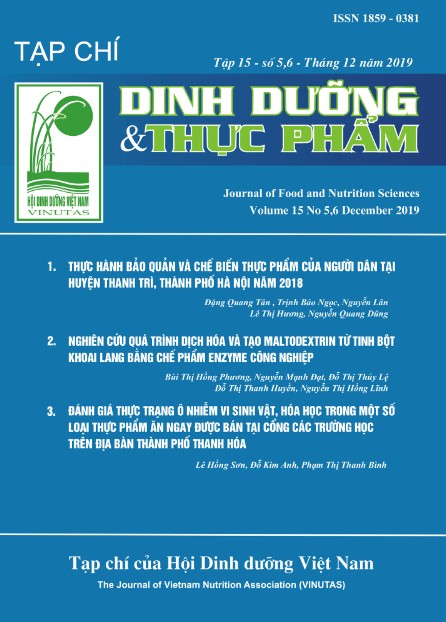STUDIES ON PHYSIOLOGICAL FEATURES AND TAXONOMY OF HALOPHILIC BACTERIUM SYNTHESIZING HIGH CANTHAXANTHIN
Main Article Content
Abstract
Canthaxanthin (β, β-Carotene-4, 4’-dione) is a red-orange carotenoid that belongs to the
xanthophyll group. Canthaxanthin is also responsible for the color of salmon, and has the
antioxidant, anti-inflammatory, anti-cancer features that are beneficial to human health. The
halophilic bacterium is a group of microorganisms with the largest number of strains that are
capable of canthaxanthin biosynthesis. The Culture Collection of Food Industry Research
Institute (FIRI Culture Collection) is very diverse, including halophilic bacteria isolated from
salt fish and soil of salt field. The VTP20181 strain in FIRI Culture Collection is a halophilic
bacterium that produces canthaxanthin. We have identified physiological features and taxonomy VTP20181 strain that it is Paracoccus carotinificiens VTP20181, canthaxanthin content
in dry biomass at 530.01 µg/g. This strain is used for production of canthaxanthin in industrial
scale which is applied in salmon feed.
Keywords
Halophilic bacterium, Paracoccus carotinificiens, canthaxanthin


